Matador Network's Blog, page 2
October 16, 2025
Goodbye Passport Stamps: What the EU’s New Entry System Means for Travelers

The traditional passport stamp continues its slow decline. In the latest move away from physical stamping, the European Union launched on October 12 a new “Entry and Exit System,” known as EES, at airports to streamline the process for travelers staying in the EU for 90 days or less. The system is designed to help EU officials digitally track entries and exits and streamlining data collection. ensuring travelers aren’t abusing the “90 days out of 180” policy for staying in the Schengen area.
EES is designed for non‑EU nationals making short stays in the Schengen area (that is, most EU members except Ireland and Cyprus, plus Iceland, Liechtenstein, Norway, and Switzerland). The system digitizes what was formerly a manual passport‑stamping process: instead of inked stamps, travelers’ entry and exit data—including passport details, travel dates, facial images, and fingerprints—are recorded electronically. On first crossing after EES is active, biometric registration is necessary; for subsequent trips (within three years or when using the same passport), only identity verification is required. In short, you’re going to have to submit to finger printing and face scanning to enter the Schengen area.
However, several categories are exempt: EU citizens, holders of long‑stay visas or residence permits, children under age 12 (for whom fingerprinting is waived), and certain diplomatic or special‑status travelers. All countries in the program are expected to be onboarded by April, with expansion to seaports and other points of entry beyond international airports coming as well. Travelers who don’t meet the requirements of entry — say, those who have spent more than 90 days out of the past 180 in the European Union — will be denied entry at the border. How this plays out for crafty travelers with multiple passports is yet to be seen – or tested. 
October 15, 2025
Meet the Unsung Heroes Living in National Parks — and Building Your Favorite Hiking Trails
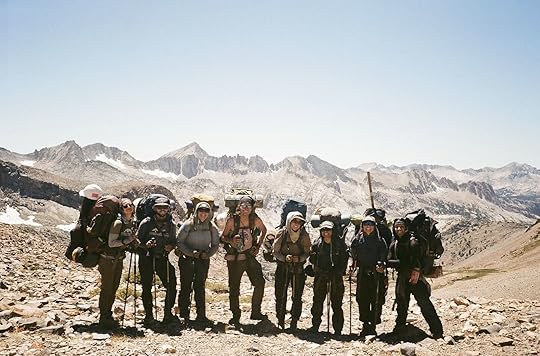
Ever stopped and thought “hmm, I wonder how this trail got here?”
In national and state parks, the answer is obvious: the trails are built mostly by park management, supported by either national or state funds. For most trails on public land outside of official parks, the answer to who builds your trails can get a lot more complicated. But if you’ve ever hiked in northern California, there’s a chance your trails were built by young people from the Eastern Sierra Conservation Corps, or ESCC.
It’s a totally independent non-profit loosely based on the successes of the Civilian Conservation Corps of the 1930s, which built park amenities, infrastructure projects, and thousands of miles of trail through the American West. However, it’s significantly smaller than California’s current-day version of the CCC (the California Conservation Corps), which founder Agnes Vianzon says is on purpose. “They’re the largest and oldest conservation corps in the country, and get a line item in the state budget,” she says. They also cap the maximum age lower than Vianzon does (at 25, rather than 30), and limit how much participants can be paid. “And then we provide additional things for our members, like weekly mental health counselors available even in the wilderness,” she says. “Because that’s the level of support we want our members to have.”
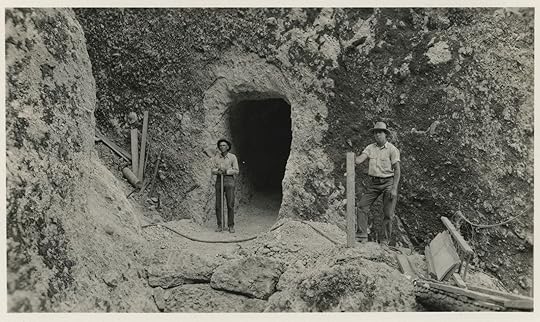
CCC workers in Pinnacles National Park, circa 1940. Photo: NPS/Allison Van V. Dunn/Pinnacles National Park
The nonprofit is based in Bishop and Mammoth Lakes and combines caring for the land with leadership and skill development, with a focus on improving access to and inclusion in the outdoors. It was founded in 2016 by Vianzon when she realized that traditional conservation and outdoor skill programs tended to appeal to and focus on only a small section of the population. Today, ESCC runs outdoor trail- and park-focused construction and maintenance programs across the Sierra, providing gear and transportation to participants who need them. It explicitly recruits from historically underrepresented communities and doesn’t set strict requirements on experience or previous time spent outdoors.
View this post on Instagram
A post shared by ESCC (@easternsierracc)
It runs multiple tiers of programming across California, like the “Range” program, geared toward first-time participants and those who want to build their skills. Seasonal volunteers live and work in the wild, spending their days getting hands-on with trail development while learning about wilderness skills, ecology, and outdoor teamwork. ESCC’s “WILDlands Technical Trail Crews” are for ESCC alumni to lead more advanced projects, like major trail reroutes and builds, while potentially also developing the next generation of trail talent. In some cases, ESCC workers can even live inside a national park, as in Sequoia and Kings Canyon National Parks, where the organization partners with the National Parks Foundation.
ESCC participants are trained on wilderness first aid, camp cooking, tool use, water safety, and even mental health strategies for when they’re feeling overwhelmed in remote, difficult surroundings. One thing that sets ESCC apart, says Vianzon, is how much it values representation and inclusion. “Our demographics are representative of the general demographics,” she says. “Black, brown, queer folks, trans folks come here. We have crews that are majority trans, majority queer.” That’s on purpose, she says, to make sure being on a crew feels like a safe, welcoming space.
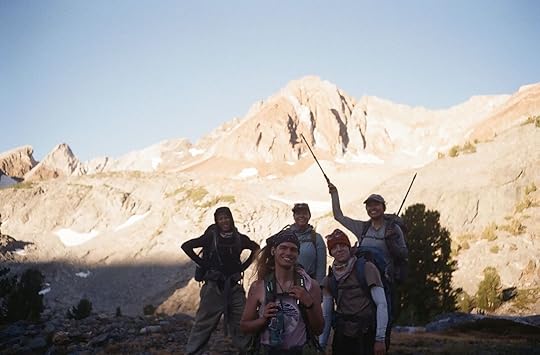
Photo: Eastern Sierra Conservation Corps.
The first ESCC trail crew was only five people, all women, working in Sequoia and Kings Canyon in 2017. “We doubled every season,” she says, “and hit a million dollars in annual budget leading into 2019. We’ve had to rebuild that every year, and we still continued to grow.”
Like many conservation organizations, ESCC’s budget is always in flux. Much of the organization’s funding comes from grants and donations, and Vianzon acknowledges that in the current political climate, some of ESCC’s programs could be targeted. ESCC supplements its work with private donations and ensures participants, all of whom are between 18 and 30, are fairly paid for their labor. Since January of 2025, federal funding for conservation, climate, national parks, and public lands projects has been drastically cut, leaving organizations like ESCC to fill in the gaps. With funding harder to come by and more areas of need, Vianzon acknowledges it’s a tough climate. “It’s been hard to figure out how to keep our crews on the ground,” she says, “and there’s a particular way in which ESCC does that. So yeah, I feel like there is an urgency.”
Matador Network connected with Vianzon to learn more about ESCC’s work, get the scoop on how trails are built, and learn how organizations like hers are staying alive in the current political climate.
Some answers have been edited for length and clarity.
Matador Network: How and why did ESCC get started?Vianzon: We were founded in 2016, and really for these first nine years, I’ve basically been a staff of one up until just a few years ago. It was partially to fill a gap not just in government and federal agencies, state agencies, and public land agencies, [but] also a gap in leadership development of young people. I was working in the conservation corps space for a very long time before ESCC.
In what ways are you similar to probably the only trail-building organization most people know — the CCC during the New Deal?Vianzon: The California Conservation Corps is based on the CCC, the Civilian Conservation Corps of the New Deal. And so the Green New Deal was being proposed as the new Climate Corps came up in the last administration. We also hire young adults. However, the original CCC didn’t even allow women to participate. And there’s always been this [idea that] yes, it’s service, yet it comes at a sacrifice — including pay. So there are some ways that we’re similar and really, a lot of ways in which I really didn’t want to be similar. Very much that stemmed from my own experience and what I was seeing in employment and visitation of the demographics of national parks, of who gets to go and who gets to work there.
We’re a nonprofit. However, we don’t have a lot of volunteers. The youth that come here to work are paid W2 employees, and the mechanism to get them out in the mountains to live and work is through fee-for-service contracts. So, the organization partners with federal agencies and negotiate to have our crews out there. We’re not the only ones who do this; however, we have our crews literally immersed in that outdoor backcountry environment. So, they are taking care of the land. It’s more than building trails and maintaining trails. We’re restoring areas. We’re protecting the land. We’re keeping the hikers on the trail.
What is the primary goal of the org: to build trails, or personal growth/development for volunteers?Vianzon: So, not only is this a work mission, but it’s job training and workforce development. It is also skills for life and the coaching, the impact, the big investment in every young person that comes through, because we are out there the whole entire time. So, it’s building trails and protecting the land, and building themselves at the same time.
How has your work and mission changed in light of fluctuating funding for environmental work, and fluctuating political opinion? Or shutdowns?View this post on Instagram
A post shared by ESCC (@easternsierracc)
Vianzon: What has been interesting most recently I would say is in 2025, our organization was not affected by AmeriCorps cuts, because we’re not dependent on AmeriCorps funding. With [AmeriCorps] there are rules and policies with what you’re allowed to pay, and what ESCC was paying was above the maximum limits. And although we could get AmeriCorps funding and be able to provide scholarships, it still put our members below the poverty line for pay, which is exploitation.
It is very, very, very scary to have been witnessing the gutting of the people who protect our public lands, the gutting of the Forest Service, the USDA, the Department of the Interior, and who is running those agencies and who this administration has put in charge. And so our work is still based in protecting the land and building up our young people. But it will be hard to figure out how to keep our crews on the ground. We also need to get back to community, back to talking to your neighbor, back to mutual aid, back to living and working or living and cooperating in a community. Because with how things are moving forward, it doesn’t look great without more collaboration.
What do you wish the average person knew about who is actually building/maintaining trails?Vianzon: If you have access to a trail and know what it is and how it feels to experience one, that’s a privilege right there. But yeah, it’s hard f****** work. It is laborious. It is manual labor. It takes, and not just in a physical way. It takes mental emotional labor to put down your phone, to put down addictions, as with our sober crews. We have limited cell service, and you can’t go home and dissociate. If you have an argument or conflict with someone at work, you are going back to camp, and that person is cooking you dinner. So it’s such a big learning curve. The physical, the mental, the hiking and work facilitates transformative experience in these young people. Like I said, it is immersive.
With how trails got there, it wasn’t John Muir. It was Indigenous people for tens of thousands of years, with trading routes. It’s [important] to assess access to trails now, who is building trails, and the importance of trails and how much recreation is growing. Those are things I wish everyday people knew.
What’s an average work day/week look like in the Sierra Nevada?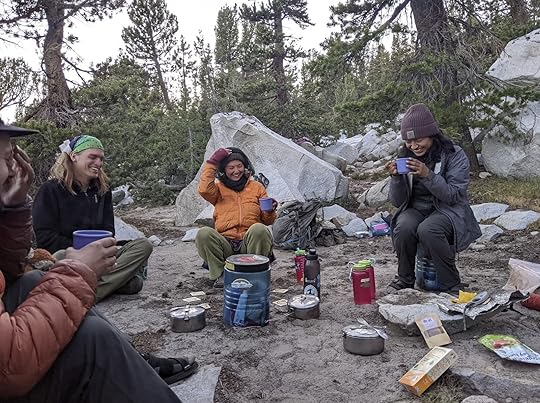
Photo: Eastern Sierra Conservation Corps.
Vianzon: Our programs run from May to September. We have an orientation period, virtual orientation, on-the-ground orientation, and training on the ground. Once our crews are out there, they get resupplied once a week with fresh food. They’re in a front country camp that might have bathrooms and showers and stuff like that, but at some point, all of our crews move into the wilderness in the backcountry, where resupplies are only via packers and meal trains. Throughout the entire season, weekends are spent with the crew.
On week days, it’s not “set your own alarm and be ready to go by 8 AM.” It’s a team effort as people rotate who cooks breakfast and gets lunch out. Everyone does chores. Everyone keeps camp tidy in order for us to be ready for work at our work location, which happens to be in the back country of the Sierra. Days start around 6:00 AM and end around 8 or 9 PM. Not every night, but a couple nights a week, our program also includes a curriculum. There’s communication necessary for getting on the same page as far as the community and how work is going, what needs to be done, work reminders. Each of those meetings once a week ends with a gratitude circle, because a functioning, communicative group is going to get more work done.
This is a group of young people from all different backgrounds and ages, and we’ve figured out a way to have this work. We facilitate this experience every summer, every crew. And it’s not always pretty, but it’s life changing and, in some cases, life saving.
Tell us about your work/projects to get underrepresented groups into the outdoors.View this post on Instagram
A post shared by Pattie Gonia (@pattiegonia)
This is where I feel like, yes, there are so many conservation cores and they all serve youth. They all serve opportunity youth. They all serve unhoused or young adults who don’t have their high school diploma. I went through these ranks, and had to fight and claw as a queer person or as a woman of color or as a “fill in the blank.” And I watched, I witnessed, I was passed over for promotions. If you had a beard, you became a crew leader almost immediately. I spent all these summers in the park service and then I spent all these summers working with conservation corps kids, and I saw discrimination, bullying, all kinds of stuff.
Not that we have all the answers or are doing everything exactly right, but we’re different than other places. The folks that come here have heard of us through word of mouth, our alumni network, or our partnership with Pattie Gonia, a drag queen activist who helps bring in money for us every single summer. This is a BIPOC- and woman queer-led organization. It was important for us to have that representation before having or facilitating an affinity space.
So if we are going to have a queer crew that is going to be led by a queer person, if we’re going to have a trans crew, which we have, it will be led and made up of all trans people. So that level of demographics, that level of affinity space alone provides something different for these folks, folks that are dedicating their summer to doing something that they know is going to be hard and push them.
If ESCC went away next year, what’s the first thing people in California’s outdoors would notice?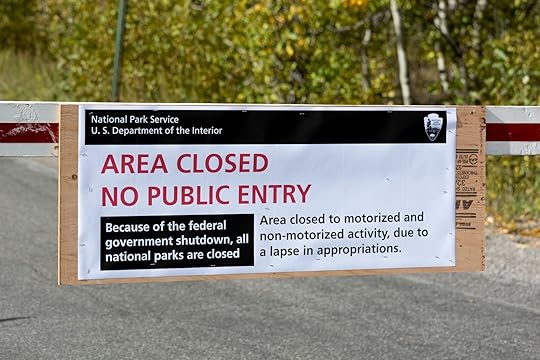
Photo: Philip Bird LRPS CPAGB/Shutterstock
Unfortunately on a big scale, we would go unnoticed. But the impact I would say of our alumni, of peoples whose lives have been changed, of what people come here and feel and see, that is different than in other places from around the state and around the country. We’re a small piece of a bigger fight that is going on, and there’s an urgency to now, in the political climate, with the literal harm being caused daily to the populations that I serve and am a part of. Along with other conservation cores across the country, everyone agrees every conservation corps is in trouble.
Right now in the government shutdown, our national parks are being trashed. There are people on the ground, but there’s a total overhaul of people, resources, restrooms, trash, impacts to wildlife, on and on and on. Those places are getting trashed. And so maybe we need our crews out there more. There’s a big backlog of work that will need to get done — not only opening up and protecting the land, but building the opportunity and the skills for these young adults.
And we can back it up with the number of people that stay in this type of work. We can back it up in the folks that come back for leadership training and the percentage of leaders, leaders of color, queer leaders that are going into National Park Service jobs, Forest Service jobs, conservation corps jobs, and leadership positions. So, it’s literally changing the face of the people who are in those places and spaces. That has to continue to happen in order for there to be an investment in these places. 
At This Luxury Resort Near Palm Beach, Florida, Wellness Is Five-Fold

As someone who’s been into wellness trends for over two decades, I’ve seen a lot of fads. Some are legitimate, but others are impractical or just downright silly. I was a gym girlie, a barre class babe, a smoothie snob. I tried every skincare serum and type of massage and sauna.
Eventually, I found my way into somewhat more woo-woo ways like mountaintop sound baths, essential oil tinctures, and Reiki. I learned about Ayurveda, a thousands-of-years-old holistic approach to understanding the science of life, and when I lived in India, I dove more into beauty products that centered on these principles, like scalp oil treatments and eating in alignment with my dosha (body type). So, when I learned there was an East Coast wellness resort rooted in Ayurvedic practices, I knew I had to experience it firsthand.
Amrit Ocean Resort on Singer Island Florida’s Palm Beach County is special. It might be the only place in the world that’s built on crystals (there were four placed at each corner during construction, offering what they call a vortex of calm, balance, and clarity). Its name means “elixir of life,” and it’s one of Newsweek’s Best Fitness & Wellness Retreats of 2025. With the ocean breeze and panoramic views, it aids in the ionic-charged feelings of refreshment.
The outside world is moving faster each day, the demands on all of us greater. But here inside Amrit, guests have a chance to slow down and ground themselves in their bodies. It’s about taking care of yourself without losing the enjoyment of life. This luxury sanctuary is rooted in ancient practices and believes in five-fold wellness: nutrition, fitness, mindfulness, relaxation, and sleep. Here’s how to maximize your time on Singer Island’s best-kept secret.
Inside the five-fold wellness experience at Amrit Ocean Resort 1. Nutrition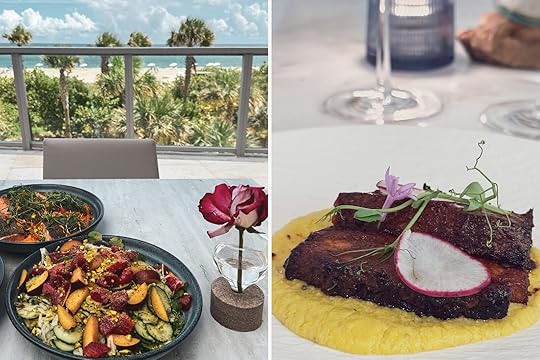
Left: Ayre. Right: Tula. Photos: Christina Berke
You might hear “wellness” and think strict cleanses and no cell phones, but Amrit is all about equilibrium. With its remedy-inspired mocktails that include functional ingredients and biodynamic wines, you can enjoy the best of both worlds. After all, a new habit is hard to integrate if it’s not feasible in everyday life.
Grab a drink at the bar where master sommelier Philip will make a cocktail like the Pineapple Roast (reposado tequila, roasted pineapple, lime, and a hint of chili), which has benefits like being high in Vitamin C, boosting immunity, and aiding digestion. Or opt for an organic, vegan glass of GAIA Cabernet Sauvignon from Domaine Bousquet. This Argentinian wine was one of my favorites, with its black currant and black cherry notes.
Dining with an ocean view is a treat in and of itself. TULA (which means balance) takes it a step above by offering wild-caught seafood paired with organic produce. Chef Craig Tooker opts for seed-oil alternatives like ghee, avocado oil, and beef tallow and avoids the “Dirty Dozen” list so you can truly trust and enjoy the experience without compromising health standards.
TULA’s veggie-forward menu includes zucchini blossoms stuffed with lemon basil ricotta cheese with romesco sauce; burrata and blood orange salad with roasted beets, arugula, mint, and macadamia nuts in a lemon-basil vinaigrette; or roasted woodland mushrooms with aji amarillo potatoes and garlic Brussels leaves in carrot and green apple broth. Or enjoy crudo with hibiscus dashi, candied hibiscus, green apple, plantain chips, and pumpkin seeds, and the Berkshire pork belly with white miso on a bed of serrano corn puree. And in the name of balance, don’t miss the Basque cheesecake with strawberry and shiso.
On Saturdays, there’s a Tide to Table menu with dishes like lobster bucatini (fresh shucked lobster, bucatini pasta, creamy tomato sugo, and pecorino cheese) or the hamachi crudo (yellowtail, yuzu kosho, pickled watermelon radish, crispy shallots, avocado mousse, and trout roe with truffle oil). For dessert, try the chocolate coral reef (dark chocolate mousse, passionfruit gel, and pistachio “sand”), like an elevated adult version of the toddler-favorite dirt cup desserts.

Penthouse dinner. Photos: Christina Berke
Coming soon is Ayre’s open-kitchen dining concept in partnership with Washington DC’s Michelin Bib Gourmand awardee Karma. I was lucky enough to get a sneak peak and tried dishes like the crispy salmon on carrot ginger puree and plum, blood orange, fennel, and cucumber salad.
For a splurge, rent the wellness penthouse for a chef-prepared menu to your party’s preferences. Chef Craig created dishes like black sesame seed cone with truffle lemon mascarpone and osetra caviar, scallop with carrot apple tapioca, torchon with plum, elderflower compote, frisee mango with champagne vinaigrette, dry-aged sirloin with sunchoke foam, and Atlantic halibut with baby bok choy and gremolata. Dessert was Valrhona chocolate ganache, mango mouse, and Nutella powder. Expect stunning Atlantic water views and maybe even a double rainbow.
2. Fitness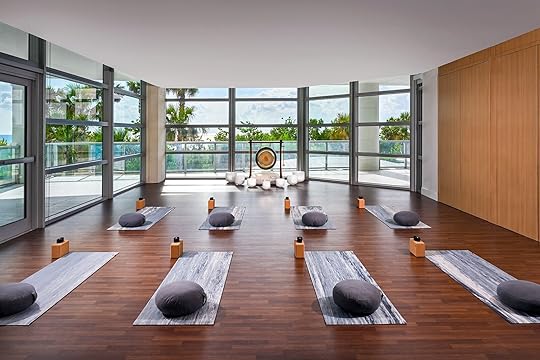
Photo: Amrit Ocean Resort
Movement is medicine, and if you’re into the gym scene, Amrit’s got you covered. Fitness classes include sandy sunrise or studio yoga, restorative somatic movement, tai chi, and spin. Those up for something new can try the sunset floating sound bath. You’ll glide on the pool while singing bowls are played to relax your body, mind, and soul. Alternatively, take the in-room yoga mat for some stretches before popping down to walk on the shore.
3. Mindfulness
Photo: Amrit Ocean Resort
Spas can get a reputation for being frivolous and fancy, but wouldn’t the world be a better place if everyone had the chance to unwind and get pampered? The spa at Amrit is a marvel at 103,000 square feet and four floors — the largest in Florida. It even has its own set of elevators, so after treatment, you don’t have to poke around and risk running into anyone. What’s more: you can rent out a private oceanfront spa suite for a family vacation, couple’s getaway, or bachelorette party. Once you’re settled in, there are myriad treatments to explore.
When I was in high school, I worked for a neurotoxicologist who administered hyperbaric oxygen treatments. The chambers were more like a loud, dark casket, and I was too afraid to ever try it, so when I heard Amrit had them, I was skeptical. But it’s nothing like it was then. It’s more like a glamping tent complete with soothing lighting, magazines, and anything else to help you relax. If that still sounds like too much too soon, you can warm up with a Somadome session: a meditation pod that billionaire Sir Richard Branson is known to love that incorporates affirmations, color therapy, and sound.
If you’re a skincare enthusiast like me, you’ve likely seen influencers yapping about red light therapy. Amrit has it, of course, but does it one better with its Ammortal Chamber. It’s like a tanning bed but actually good for you. Five times good actually: red light therapy, vibration therapy, guided meditation, oxygen, and PEMF (pulsed electromagnetic field) that’s designed to “promote cellular repair, reduce inflammation, boost immunity and optimize longevity.”

Photo: Amrit Ocean Resort
In my 20s, my friends were keen to try a bath house in Türkiye featured on some reality show. I didn’t know much else but soon learned that it was a communal spot to steam, get scrubbed down, soak in the thermal baths, and try to avoid looking at everyone’s bodies. Amrit’s version is more intimate. The resort’s Hammam Ritual is inspired by a centuries-old tradition in many cultures (in Arabic, it means bathhouse) that seeks to align the mind-body connection. You start in the ocean view relaxation lounge with tea or fruit, then you’re picked up by your personal therapist. In the hammam, you steam to open up the pores, get scrubbed, then argan oil is massaged into the scalp and body. My favorite part was the incredibly relaxing warm water that was hand-poured from top to toe.
Something else to unwind is the Dry Float. A throwback to waterbeds, this floating meditation doesn’t require a bathing suit or salts but is more like a super-charged nap complete with a heated weighted blanket, guided meditation or ambient music, eye mask, and massage bubbles. I’ve done sensory deprivation Epsom salt floats before, and this was much less anxiety-provoking.
For a truly special treat (in fact, the only place to find it in Florida) is the indoor-outdoor Aayush hydrothermal experience. Opt to explore on your own rhythm, or choose a card that guides you through each station: sauna, hydro-reflexology path, lap pools, salt inhalation chamber, and cold plunge spread across 40,000 square feet.
4. Relaxation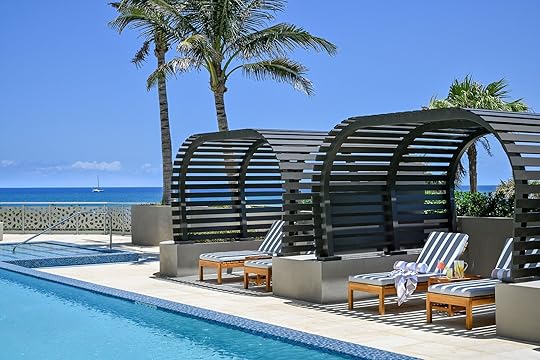
Photo: Amrit Ocean Resort
Most people think of massages and facials when it comes to spas, but many forget about their hair. Amrit has master stylists like Kimberly on staff in its salon for a fresh cut and uses Oway products (a line that’s organic, plastic-free, and biodynamic) while certified trichologist Dr. Bauman can detect early hair health issues like thinning and scalp imbalances.
For those more traditional, Amrit also has more typical resort amenities like beachside cabanas on a private stretch of sand. Even the path to the beach is thoughtfully designed. Follow the rich green foliage and get your toes in the sand within minutes.
If you’re a night owl, you might be lucky to see a sacred sea turtle nestling up on shore. Early birds can watch the sunrise while enjoying a coffee from the private balcony, as the ocean breeze gently energizes you.
5. Sleep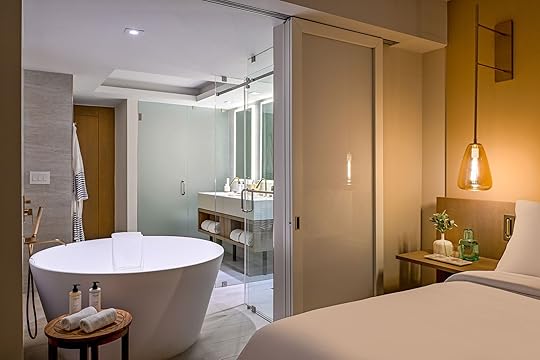
Photo: Amrit Ocean Resort
I’m sure I’m not the only one who gets cranky if they don’t get a good night’s rest, and Amrit gets it. Sometimes, hotels can be loud or uncomfortable, but the resort’s Cloud 9 experience offers circadian lighting, guided relaxation, and a serenity bar. Turn-down service provides an eye mask, organic teas and chocolates, and sets the lighting for your eyes to better ease you into sleepy town. Staff will also pull down all the blinds to ensure that our lighting doesn’t interfere with the sea turtles just outside. (They’ve even adopted a sweet six-pound juvenile Loggerhead named Paddy through MarineLife.org.) It can’t be said enough that having an ocean as your background IRL is just what the doctor ordered.
Getting to Amrit Ocean Resort
Photo: Christina Berke
Amris Ocean Resort is about 20 minutes away from Palm Beach International Airport (PBI) by car. (Fort Lauderdale-Hollywood International Airport (FLL) is a little over an hour away.) If you choose to rent a car at the airport or are driving to the resort, valet parking is available for $35 per night. 
Rails to Trails Projects Now Span the Entire Country. These Are the Most Stunning to Experience.

More than 1,400 unused railways traverse the plains, mountains, coastlines, and cities of the United States, according to Abandoned Rails. Some once carried cargo and coal, others shuttled workers to job sites and dreamers towards their visions of gold and glory in the wild west. By the early 1900s, more than a quarter-million miles of active rail stretched across the country. Since 1986, groups of visionary minds led by the Rails to Trails Conservancy are repurposing some of these abandoned railways as biking and hiking trails. These “rail trails” are achieving notoriety. Today, there are more than 41,000 miles of multi-use trails that stretch from coast to coast, with nearly 2,500 rail trails — and these are some of the most stunning from coast to coast. On October 15, a new PBS documentary titled “From Rails to Trails” launched to highlight the Conservancy’s efforts, in particular reaching the halfway mark in its capstone project, the Great American Rail Trail, which once complete will stretch from coast to coast. Getting out to ride, walk, or stroll one of these trails is a great way to support local-led conservation efforts while gaining a better understanding of an area’s history.
Great American Rail Trail
Photo: Great American Rail-Trail
Rails to Trails’ biggest project is the Great American Rail Trail. This behemoth of a project aims to offer a coast-to-coast cycling experience, and when complete will stretch over 3,700 miles across 12 states. Currently, the trail begins in Washington, D.C. and runs along the northern US to Washington state, passing through Pennsylvania, West Virginia, Ohio, Indiana, Illinois, Iowa, Nebraska, Wyoming, Montana, and Idaho along the way.
In 2020, the group added over 100 miles in eight states to the 2,000 miles already in existence. The route will include established trails along with newly developed trails to connect them. One hundred percent of the trail will be separated from vehicle traffic, offering a peaceful and scenic way to explore the northern United States. No firm opening date has been announced, but the entire route is currently more than half done.
Ecusta Trail, North CarolinaThe first section, covering six miles, of the 19-mile Ecusta Trail follows the path of the former Ecusta rail line through one of the nation’s up-and-coming mountain bike hubs. Two addition phases to bring the trail to completion are funded but not yet complete. The rail line itself was originally constructed in the early 1900s as part of the Southern Railway system. For decades, the line served as a freight route to the Ecusta Paper Mill in Pisgah Forest, which was a major regional employer until its closure in 2002. After sitting dormant for years, the corridor was formally railbanked in 2019, paving the way for a new chapter of public use.
The Ecusta Trail builds on the “rails to trails” legacy of making an area’s history a bigger part of its future — and getting people outside on a multi-use path in order to do so. It also reconnects communities through accessible infrastructure. It passes through scenic stretches of forest, farmland, and small towns, linking parks, schools, and local businesses. Supported by the Friends of the Ecusta Trail and regional stakeholders, the project has received funding through local, state, and federal grants. The trail opened in July 2025, and the hope is that it becomes a key segment in the proposed 100-mile Hellbender Trail network across western North Carolina.
Clear Fork Rail Trail, West VirginiaWest Virginia is a hotbed for outdoor recreation, and as such it’s fitting the state opened the Clear Fork Rail Trail project in 2024. The project reclaims a section of the former Virginian Railway, once a key coal transport corridor in the early 20th century. The specific stretch now forming the Clear Fork Rail Trail served mining communities in the Clear Fork Valley until freight operations declined in the mid-1900s. By the 1980s, the line was abandoned, leaving behind a gently graded corridor that, much to the delight of the Rails to Trails Conservancy and local governments, proved ideal for trail development.
Following its completion the trail spans nearly eight miles through wooded hollows and alongside the Clear Fork River, preserving the industrial heritage of the area and under the direction of the West Virginia Division of Natural Resources. the trail is part of a broader strategy to stimulate rural revitalization through outdoor infrastructure. Interpretive signs along the route highlight the Virginian Railway’s legacy and its role in shaping the coal country landscape.
Northern Rail Trail, New Hampshire
Photo: Friends of the Northern Rail Trail in New Hampshire/Facebook
The Northern Rail Trail runs 59 miles from Boscawen to Lebanon, New Hampshire. En route, you’ll pass the maple and red spruce that provide much of the state’s famed fall foliage. Parts of the trail are crushed stone hard pack, according to the trail’s site, while the rest is made of cinder. An old caboose lies in route, a testament to the trail’s original use. Riders who do not wish to do the entire ride in one day can book lodging in East Mandover or camp at the Mascoma Lake Campground.
Santa Fe Rail Trail, New Mexico
Photo: Tara Kenny/Shutterstock
The Santa Fe Rail Trail is unique on this list because it follows a still-active rail line, built and operated by the Atchison, Topeka & Santa Fe Railway. Bikers, hikers, and runners can traverse 15 miles from the Santa Fe Depot in town to US Route 285. Views along the way include the historic city center and the desert southwest landscape that surrounds it, with the Sangre de Cristo Mountains towering in the background. Part of the route is paved, though much of it is dirt trail, making this route ideal for gravel bikes.
Peaks to Plains Trail, Colorado
Photo: Clear Creek Canyon Park
Colorado’s Peaks to Plains Trail currently runs 4.2 miles through Clear Creek Canyon in Jefferson County west of Denver. The vision of both the state government and county governments is to create 65 miles of rails to trails from the west Denver suburbs to Loveland Pass. The paved portion currently runs along the Colorado Central Railroad former path, with the final trail descending (or ascending in the opposite direction, for hardy riders) from the high Rockies to Golden, where riders can take a dip in Clear Creek.
Banks-Vernonia State Trail, Oregon
Photo: Friends of Stub Stewart State Park and Banks-Vernonia Rails to Trails/Facebook
The Banks-Vernonia State Trail runs 21 miles between Banks and Vernonia, appropriately. Riders cross the 80-foot-high Buxton Trestle, with views out over the lush green valley below and into the dense hillsides of the Coast Range on either side of the trestle. An interesting feature of this trail is that it consists of a paved section for bikers and runners, along with a dirt trail section for equestrians and hikers running adjacent to the paved segment. As a result, it is accessible to a wider range of recreationists.
White River State Trail, Wisconsin
Photo: White River Trail
Wide-open country views and charming towns make the White River State Trail among the most popular of rail trails in the US. The trail runs 19 miles and passes through Elkhorn, Springfield, Lyons, Burlington, and Kansasville. Turn it into a full day or more by staying overnight in one of the towns. We recommend turning your ride into a “cheese curd tour,” stopping at two or more of the following: 1175 in Kansasville, Fred’s Parkview in Burlington, Flat Iron Tap in Lyons, Craftsman Table and Tap, and Culver’s in Elkhorn. In Springfield, If you wish to pedal further, the White River State Trail is part of the larger Route of the Badger, which offers more than 300 miles of connected trail across Wisconsin.
Catskill Scenic Trail, New York
Photo: Catskill Scenic Trail
Upstate New York is home to nearly two dozen rail trails. None encapsulates the region’s natural beauty and abundant flora and fauna like the Catskill Scenic Trail. Here you can ride on bike or horseback, or hike your way through the rolling green Catskills, experiencing the route that the Ulster & Delaware Railroad used to run vital goods and supplies across New York from 1875 until 1932. In the winter, this trail is perfect for cross-country skiing, with long flat stretches punctuated by slight inclines that get the heart pumping. 
October 14, 2025
Would You Raise Your Kids in 100 Countries? This Family Did — and Built a Global Travel Brand Doing It

Garrett Gee didn’t originally plan on building a family-focused global hospitality brand or launching a $10 million animated series. At 21, he just wanted his iPhone app to work. In 2013, Gee, a college student, stood on the stage of Shark Tank pitching his QR code scanning app. Every investor said no.
Two months later, Snapchat acquired the app for $54 million.
Garrett and his wife Jessica could have retired then. Instead, they set the money aside, sold most of the things they owned, and put that $43,000 toward exploring the world.
“We made the very mindful decision to set the money aside and, famous last words, do a little bit of traveling,” Gee said on a recent episode of Matador Network’s Creator: The Podcast.
That little bit of traveling started 10 years ago with a young daughter and infant son. It’s still going, and Garrett and Jessica now also have a third child that has joined the adventure.
Since then, the Gees — known online as The Bucket List Family — have traveled to more than 100 countries with their three children, built a following of millions, and turned their trips and content into a media empire that includes luxury properties, a forthcoming cartoon, a children’s book with National Geographic, and a family-friendly safari lodge in Africa.
Building a brand with a backpack and a babyThe Gee’s philosophy on family travel is straightforward: “How much of your life are you going to stop living because you had kids?” Gee says on the podcast. “For my wife and I, the answer is zero. We’re living life full steam ahead and we’re bringing our kids along with us.”
To make that possible without dipping into the savings they promised themselves not to touch, they started a YouTube channel and Instagram. The word “influencer” hadn’t entered the lexicon yet, but they began cold-pitching brands in hopes of travel discounts or partnerships. It didn’t work at first.
Their first product gift came from a sandal company. Their first paid campaign ($600) came from Coca-Cola, which neither Garrett nor Jessica drink. (“We poured it out and filled the bottle with water,” he admits.)
But their timing coincided with the rise of the creator economy and their travel opportunities grew along with their following. Their perspective of championing family travel stands out even among the now-crowded travel creator landscape.
Parenting often requires trust — both in your child and your judgment. In Garrett Gee’s case, that trust was tested publicly after a video of him helping his young son jump off a cliff into Lake Powell sparked controversy online. The footage, intended to show a father encouraging his child to overcome fear, quickly became the center of a polarizing debate about risk, responsibility, and parenting in the age of social media.
View this post on InstagramA post shared by Garrett Gee (@garrettgee)
For those unfamiliar with the Bucket List Family’s long history of adventure-led parenting, the video appears to have come off as alarming. Critics saw it as dangerous. But longtime followers recognized it as part of Garrett and Jessica’s ethos of raising kids who are courageous, resilient, brave, and open to experiences.
He acknowledged to PEOPLE that many of those who reacted negatively to the video may have grown up without similar opportunities to be safely pushed outside their comfort zones.
“We’re trying to teach our kid to be brave,” Gee says on the podcast. “We’re trying to teach them to be confident, and not just confident, but like truly like deep within their souls inner confidence.”
It’s not the only pushback they’ve gotten. Anyone who travels frequently with young kids is likely to face a common sentiment: Why travel with these young ones who won’t even remember everything? “It has an imprint on them and they remember more than you think,” Gee says. “They definitely benefit from it, right? It’s the ultimate education.”
Much of the Bucket List Family’s content centers on wildlife encounters: humpbacks in Tonga, sharks in the Bahamas, orcas in the Sea of Cortez.
“It’s a different kind of experience,” he says. “Kids notice small things. And wildlife notices them, too.”
The bucket list businessA decade into this experiment, the Bucket List Family is more than a YouTube channel. It’s now a multifaceted brand that includes publishing, animation, and a hospitality venture called The Bucket List Collection — a curated set of eco-conscious, experience-driven properties around the world.
In 2023, they acquired a private island in Tonga, where guests can swim with humpback whales. They also purchased a wilderness lodge in British Columbia, home to grizzlies and orcas. A new safari lodge built specifically for families with young children will break ground soon in South Africa.
“We’re not trying to compete with the Hyatts or the Marriotts of the world,” Gee says. “We’re going hard the other direction after the most meaningful, bucket-list experiences on the planet where all the money in the world wouldn’t be able to buy you what we’re able to provide.”
In October, the Bucket List Family released a children’s book with Disney and National Geographic titled The Bucket List Family and the Big Adventure. The story blends real moments with whimsical detail drawn from true experiences like seeing penguins in Antarctica, gorillas in Rwanda, and meerkats in Botswana.
If there’s one thing you can count on with the Bucket List Family, it’s that the adventure never ends. 
The Best Last-Minute Hotel Deals in NYC Right Now

Travelers worldwide gasped in horror last fall when the New York Times reported that the average nightly rate for a hotel in New York City had reached $462. At that price, visiting the largest city in the US had become out of reach for many – especially those traveling with family in tow, as dining in the city is notoriously expensive as well. But you don’t have to pay that. Instead, thanks to HotelTonight, you can snag a great last-minute hotel deal in New York City for half what others staying in the same hotel are paying – even those who planned much further out. These are the best last-minute hotel deals in New York City on HotelTonight this week (as a bonus, you’ll get an Airbnb account credit by booking one of these hotels, making your rate even more beneficial).
Browse all last-minute hotel deals in NYC
We hope you find these great last-minute hotel deals in New York City up your alley! Just so you know, Matador may collect a small commission from the links on this page if you decide to book a stay.
The Bryant Park Hotel Photo: Hotel Tonight
Photo: Hotel Tonight Photo: Hotel Tonight
Photo: Hotel Tonight Photo: Hotel Tonight
Photo: Hotel TonightThe Bryant Park Hotel stands on 40th Street between 5th and 6th Avenues, directly across from Bryant Park, placing it squarely in Midtown Manhattan, between the Garment District, the New York Public Library, and the Theater District. The setting gives guests a quiet respite amid one of the city’s busiest zones, with easy walking access to Times Square, Grand Central, and major shopping corridors. Inside the hotel, expect designer‑driven rooms, many with park or city views, and a sense of boutique luxury with modern touches.
Dining and nightlife are part of the draw: Koi (a noted sushi/Asian restaurant) is onsite or affiliated, and the hotel operates a bar/lounge catering to its stylish clientele. Amenities include concierge service, fitness center, meeting rooms, free WiFi, and a prompt, personalized staff praised by many guests. Many guests cite the view over Bryant Park, the calm interiors despite being in midtown, and the individualized service as highlights.
To reach the hotel from the airports:
From LaGuardia, you might take a combination of the M60 SBS bus into Manhattan (or driving/taxi) then transfer to a subway (e.g. the 7 or E/M lines) to 5th/42nd or Bryant Park–42nd Street.From JFK, using the AirTrain to Jamaica, then an E train toward Manhattan, transfer to a line reaching 5th/42nd, or via the 7 to Grand Central then walking.From Newark, use NJ Transit or Amtrak to Penn Station then the subway (e.g. 7 to Grand Central or shuttle / walking).Once in midtown, multiple subway lines (e.g. 5, 6, 7, S, B/D/F/M) serve nearby stations.
Typical HotelTonight rate: $250 to $350 per night (varies by season and room type)
The Evelyn Photo: Hotel Tonight
Photo: Hotel Tonight Photo: Hotel Tonight
Photo: Hotel Tonight Photo: Hotel Tonight
Photo: Hotel TonightThe Evelyn Hotel is located on East 27th Street, between Madison and Fifth Avenues, in Manhattan’s NoMad / Flatiron / Rose Hill area. This neighborhood is anchored by landmarks like Madison Square Park, the Flatiron Building, and the fashion/restaurant corridors along Broadway. Its mixing of classic architecture, small cafes, boutiques, and midtown proximity gives guests a “live‑in‑New York” feel.
Onsite you’ll find the bar “Tusk” and the restaurant Bronze, as well as the Evelyn Bakery for lighter fare. The hotel also offers a gym and full service (concierge, valet parking, WiFi) and is especially appreciated by guests for its historic character, attentive service, and location within walking distance of many attractions.
To get there from NYC airports:
Typical HotelTonight rate: $180 to $260 per night
Hotel 48LEX Photo: Hotel Tonight
Photo: Hotel Tonight Photo: Hotel Tonight
Photo: Hotel Tonight Photo: Hotel Tonight
Photo: Hotel Tonight Photo: Hotel Tonight
Photo: Hotel TonightOn a prime site in Midtown East, Hotel 48LEX is a headliner on Lexington Avenue between 48th and 49th Streets, placing it within walking distance of Grand Central, Rockefeller Center, and midtown’s major office and attraction zones. Guests like the mix of being near core Manhattan yet tucked on a quieter street.
It features its in‑house restaurant, Brasserie Cognac, serving French cuisine (breakfast, lunch, dinner), along with indoor and outdoor seating, plus common spaces, meeting rooms, and a landscaped terrace. The hotel also offers a “House Privileges” program (with daily wine hour, breakfast credit), access to a fitness center, and concierge services. Guests often praise the elegant design, attentive staff, and convenience to midtown destinations.
To reach 48LEX from airports:
From JFK: AirTrain → E train → branch to Lexington/47‑50th stations, or transfer to 4/5/6 to Grand Central then walk.\From LaGuardia: bus/shuttle into Manhattan, then local subway (e.g. M98/M101/M102 along Lexington) or connect via 7 to Grand Central.From Newark: rail to Penn Station then a shuttle/subway to Grand Central or take the S/42nd St shuttle to reach the East Midtown area. Once in midtown, Grand Central–42nd Street (Lexington Line, 4/5/6, 7) is a convenient hub close by.Typical HotelTonight rate: $220 to $320 per night
Soho Grand Hotel Photo: Hotel Tonight
Photo: Hotel Tonight Photo: Hotel Tonight
Photo: Hotel Tonight Photo: Hotel Tonight
Photo: Hotel TonightSoho Grand sits at 310 West Broadway, in the heart of SoHo (lower Manhattan). That neighborhood is known for its cast‑iron architecture, art galleries, fashion boutiques, and a mix of refined downtown energy and creative edge. It offers immediate access to the neighborhoods of NoLita, Tribeca, and Greenwich Village.
Onsite, the hotel offers several bars/lounges: the Grand Bar and Salon, The Club Room, seasonal outdoor bar “Gilligan’s,” and the 24‑hour Soho Diner.The hotel also operates a gallery space, concierge, fitness center, bike rentals, and curated social programming. Guests often commend the hotel’s energetic ambiance, well‑located position among SoHo’s galleries and shops, and its multifunctional public spaces that host art and events.
For transit from airports:
From JFK: AirTrain → E or A/C into Manhattan, transfer south via lines like the A, C, E, 1 or 6 to reach Canal/West Broadway or nearby stations.From LaGuardia: bus/shuttle into Manhattan then take a subway downtown via lines like 7 → 1/2/3 or 6 and transfer to A/C/E or 1 to Canal.From Newark: rail into Penn, then take subway (A/C/E, or 1 south) to Canal St or nearby for walking access. Once downtown, SoHo Grand is a short walk from Canal Street subway hubs (A, C, E, J, N, Q, R, W, 1 lines) and well served by multiple transit choices.Typical HotelTonight rate: $260 to $400 per night
Hotel Belleclaire Photo: Hotel Tonight
Photo: Hotel Tonight Photo: Hotel Tonight
Photo: Hotel Tonight Photo: Hotel Tonight
Photo: Hotel TonightHotel Belleclaire is located at 250 West 77th Street on Manhattan’s Upper West Side, near Broadway, Riverside Park, and Central Park’s west edge. Its location provides a quieter residential feel while still being close to Lincoln Center, the American Museum of Natural History, and the dining and cultural amenities of the Upper West Side.
The hotel features a bar/lounge, a café, and in some packages, free breakfast. Its lobby has been refreshed with a skylight and a media lounge with iMac stations. Guests often praise its charm, spacious (by NYC standards) rooms for the price, and the pleasant neighborhood context.
To reach Belleclaire from airports:
From JFK: AirTrain → E to Manhattan, then transfer to the 1 train up to 79th/Broadway, then walk or short connection.From LaGuardia: bus into the city, then connect to the 1/2/3 local lines up to 79th.From Newark: to Penn Station, then take the 1/2/3 north to 79th/Broadway and walk to the hotel.Typical HotelTonight rate: $200 to $300 per night
11 Howard Photo: Hotel Tonight
Photo: Hotel Tonight Photo: Hotel Tonight
Photo: Hotel Tonight Photo: Hotel Tonight
Photo: Hotel Tonight11 Howard occupies a site in SoHo (11 Howard Street), at the intersection of the Bowery, Chinatown, and Little Italy. This lower Manhattan area is steeped in artistic and immigrant history, and guests stay within walking distance of Canal Street, the Lower East Side, and many galleries and boutique shops.
The hotel emphasizes minimalist Scandinavian design, high ceilings, natural light, and local partnerships. Its restaurant is Le Coucou, a Michelin‑starred French dining destination by Stephen Starr, offering refined fare and a well-curated menu. The property includes a bar/lounge, nightly DJ or music programming, spa access (with light therapy saunas), and a daily “amenities fee” that includes minibar credit, WiFi, and spa discounts. Many guests appreciate the bold design, vibrant social programming, and the seamless integration into the SoHo/Lower Manhattan scene.
Transit from airports:
From JFK: AirTrain + subway into Manhattan, then transfer via lines like A/C/E or 1 to Canal St or nearby, then walk to Howard St.From LaGuardia: bus or shuttle into Manhattan, then subway (e.g. 7 → 1 or 6 down) to Canal/Canal St, then walk.From Newark: train to Penn, then subway (1, 2, 3 or A/C/E) downtown to Canal, then walk over. [mn -post-ender]Typical HotelTonight rate: $300 to $450 per night
More like thisEpic StaysThese Manhattan Airbnbs Are Still Available - and They Showcase the Best of New York CityThese Manhattan Airbnbs Are Still Available – and They Showcase the Best of New York City

New York City is the most populous city in the United States, but Airbnbs are widely banned in the city. But it is still possible to book one if you know where to look — and we’ve rounded up the best here. First-time visitors quickly realize their ideas of seeing it all in a small amount of time are optimistic. The city simply has too much going on. The best way to tackle it is to pick an area, and get to know it like a local. Despite all the headwinds, this makes it a perfect city to explore from an Airbnb.
Traveling to New York City? Check out Matador’s New York City accommodations guides:These Airbnbs in Brooklyn Offer Beautiful Views of the Bridge and SkylineThe best JFK airport hotelsThe Best Airbnb Experiences in New York, From an Alpaca Farm Tour To Sailing the East RiverThe 9 coziest Airbnbs in upstate New YorkGrab Your Crew and Head To These Lux Properties To Take in New York’s Fall Foliage10 upstate New York cabins perfect for your next winter escape
We hope you love the Airbnb Manhattan vacation rentals we recommend! Just so you know, Matador may collect a small commission from the links on this page if you decide to book a stay. Listed prices are accurate as of the time of publication.
Manhattan Airbnbs for large groupsLarge group Airbnbs in Manhattan are tough to come by, but there are some gems if you look hard enough. These two are the cream of the offerings for your group trip to New York City.
Full Floor West Village Loft w/ Grand Piano Photo: Airbnb
Photo: Airbnb Photo: Airbnb
Photo: Airbnb Photo: Airbnb
Photo: Airbnb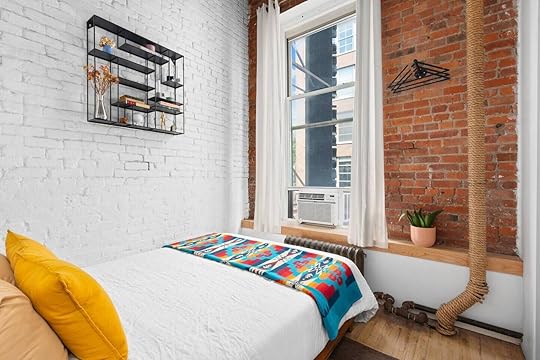 Photo: Airbnb
Photo: AirbnbGreenwich Village is prime for many NYC visitors, a trendy neighborhood of artistic personalities, hip pubs and cafes, and some of the city’s best restaurants. You’re right in the middle of the action at this massive, full-floor loft in West Village. The building was built in the 1870s as a canning factory and has since been home to many renowned artists including Argentinian painter Juan Ronaldo, who lured Beat poets in with his epic parties. Continuing that tradition, this space can be used for larger group stays and small events. With 3,500 square feet of space, you’ll have plenty of room to impress no matter who shows up. Up to 15 guests can stay in the loft’s five bedrooms.
Fifteen guests, five bedrooms
Price: Starting at $796 per night
The Lower East Side, Lower Manhattan, Tribeca, and downtown Manhattan are some of the most popular Airbnb destinations in New York City. These areas offer a variety of options suit any traveler’s needs – from luxury high-rise apartments with stunning views to cozy lofts for an intimate stay. This area offers a mix of Airbnbs – from classic brownstones to chic studios with modern amenities.
Little Italy Airbnb within walking distance to everything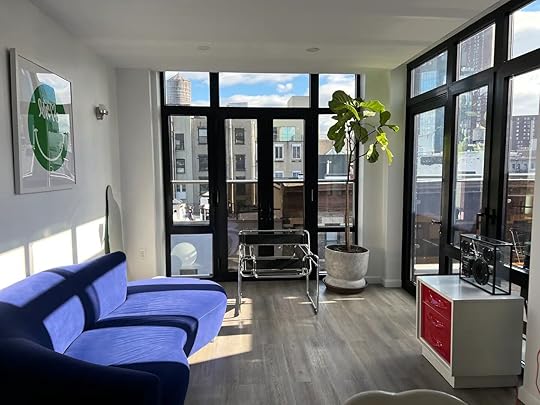 Photo: Airbnb
Photo: Airbnb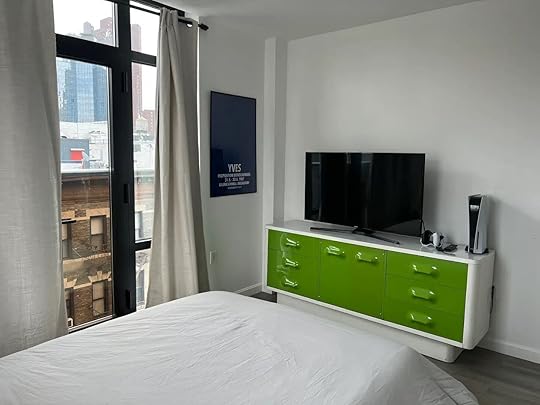 Photo: Airbnb
Photo: Airbnb Photo: Airbnb
Photo: AirbnbThis Airbnb in Little Italy is a great option for travelers wanting to explore the local area. The apartment has one bedroom and one bathroom, making it perfect for couples or small families (there is a second bed in the unit). It also features air conditioning, WiFi, and well-equipped kitchen facilities. With its prime location in the heart of one of Manhattan’s trendiest neighborhoods, guests will have easy access to some of the city’s best restaurants, bars and shops. Little Italy is renowned for its authentic Italian cuisine, so it’s a great choice for foodies! There’s also plenty of history to explore in the area, including Mulberry Street – home to one of New York City’s first Italian communities.
Three guests, one bedroom
Price: $415 per night
 Photo: Airbnb
Photo: Airbnb Photo: Airbnb
Photo: Airbnb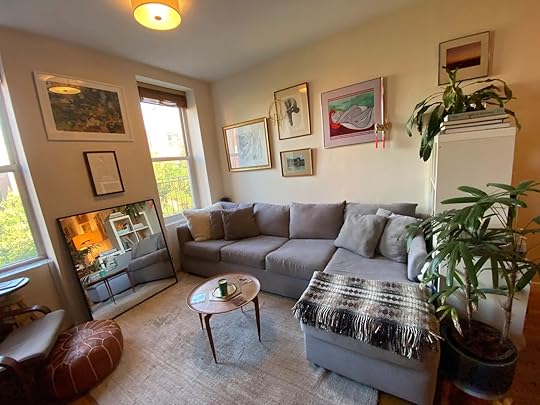 Photo: Airbnb
Photo: Airbnb Photo: Airbnb
Photo: AirbnbThis Airbnb in Manhattan is a two-level loft located just off the Elizabeth Street Garden in one of NYC’s trendiest neighborhoods. The duplex includes two bedrooms, one full bathroom, and can comfortably sleep a couple. It also features air conditioning, wireless internet, cable TV, and a fully equipped kitchen with high-end appliances. The property also offers sweeping views of the garden from the rooftop terrace, creating a perfect outdoor space to relax and entertain.
Two guests, one bedroom
Price: $295 per night
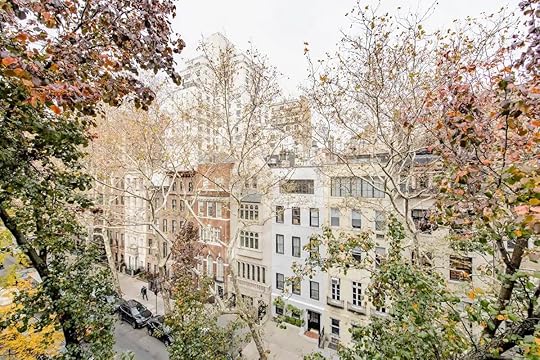 Photo: Airbnb
Photo: Airbnb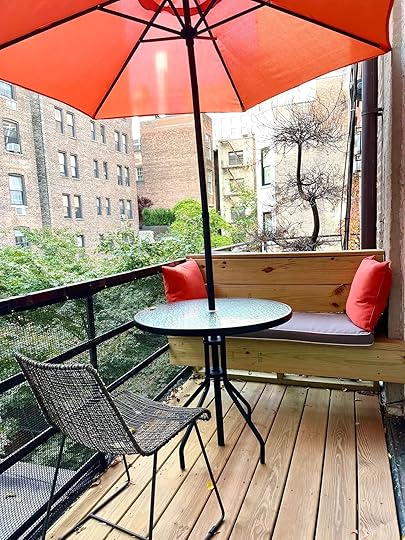 Photo: Airbnb
Photo: Airbnb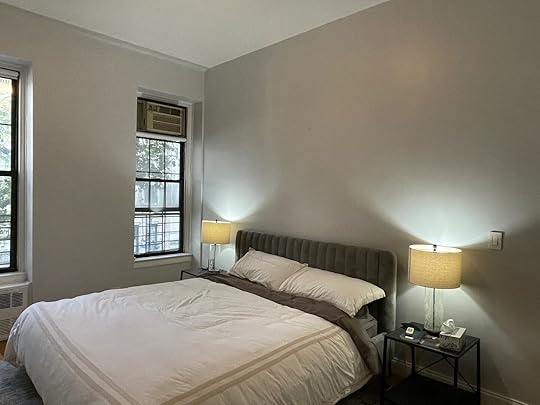 Photo: Airbnb
Photo: AirbnbAdd a bit of privacy and poshness to your Manhattan trip with this Upper East Side Airbnb. It’s smack in the center of one of NYC’s trendiest neighborhoods and has excellent walkability. From the home you can easily access global dining, top-tier nightlife, and some of the city’s most famed museums and cultural attractions.
Four guests, two beds
$395 per night
Harlem and the Upper East Side are two of the most popular areas in Manhattan for Airbnb rentals. With Airbnb rentals available from lower to upper price points, both neighborhoods offer a range of options that cater to different tastes and budgets. Harlem has become a cultural hub with its vibrant art scene, great restaurants, diverse architecture, and cuisine.
Perfect Harlem, New York Airbnb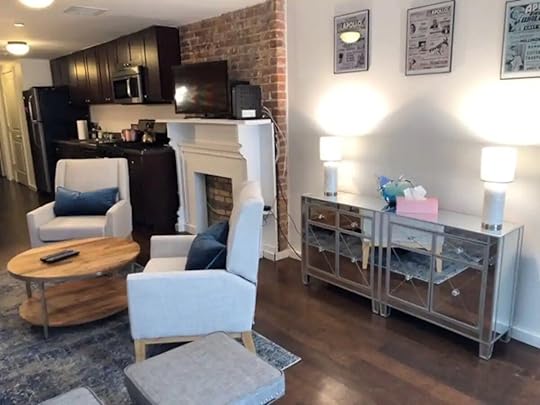 Photo: Airbnb
Photo: Airbnb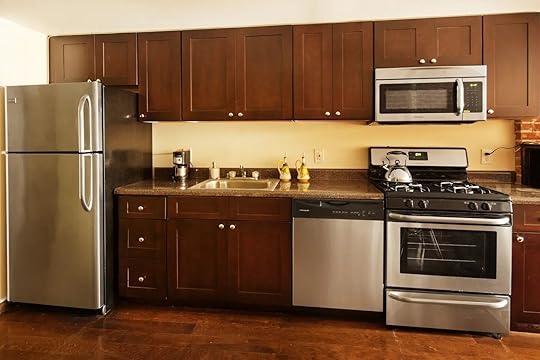 Photo: Airbnb
Photo: Airbnb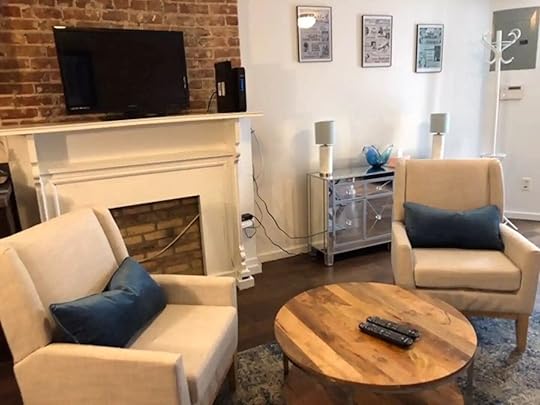 Photo: Airbnb
Photo: AirbnbThis brownstone in Harlem is an ideal base from which to explore one of the US’ most historic neighborhoods. Located on 129th Street, the apartment is right by the 125th Street shopping district and within walking distance of the Studio Museum and Apollo Theater. Loads of restaurants and cafes are nearby as well, and the city at large is accessible from the nearby subway stations. Times Square is a 15-minute ride away, and if you do have a car with you, street parking and nearby garages are available. On the inside, jam out to the record player and dance the night away to the Harlem experience.
Price: $140 per night
Manhattan Airbnbs in Midtown and near Central ParkMidtown Manhattan is the bustling center of New York City, and Airbnb rentals in this area provide visitors with an unparalleled experience. From world-renowned cultural attractions like Times Square, the Empire State Building, and Central Park nearby to high-end shopping, dining, and entertainment options, staying in Midtown give travelers a true New York City experience.
Furnished Midtown One-Bedroom Airbnb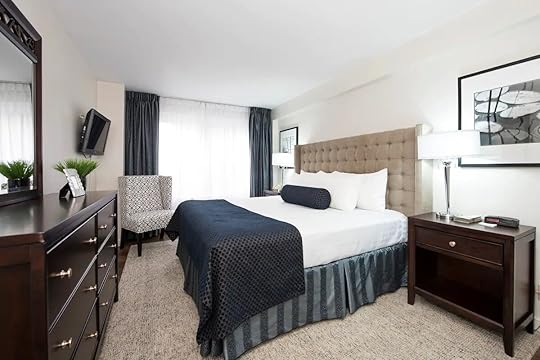 Photo: Airbnb
Photo: Airbnb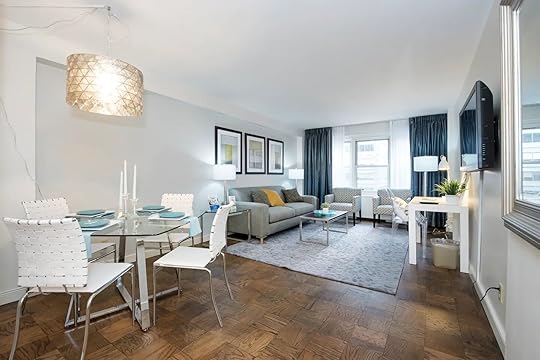 Photo: Airbnb
Photo: Airbnb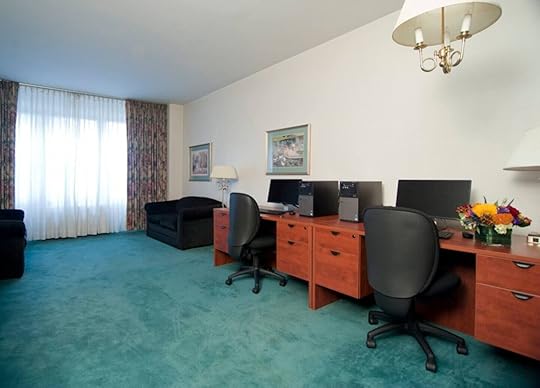 Photo: Airbnb
Photo: AirbnbWho knew you could stay in the heart of Midtown for less than an arm and a leg? This unit even comes with a large, well-furnished bedroom and an on-site gym, work center, and lobby. You’ll be within blocks of Broadway, Grand Central Station, and Times Square. The onsite concierge can point you in the direction of wherever you need to go, but when you’re this close to the action the best option is often to just get out and explore.
Price: $90 per night
More like thisEpic StaysAirbnb’s Most Wish-Listed Dog-Friendly Stays for Travel With Your PupPortals, Legends, and Andean Yetis: Walking Ecuador’s New Ancient Trails
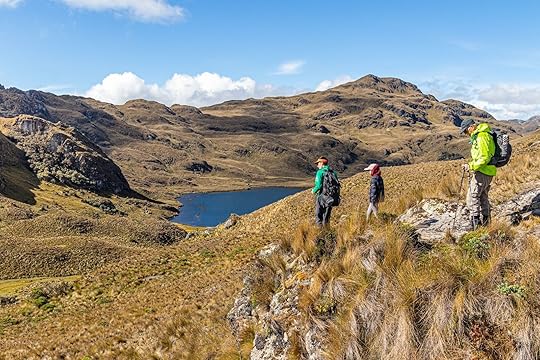
The leaves of the brugmansia and ruta brushed against my bare arms, tickling as the shaman in front of me swept them downward, then back up. I was inhaling the fragrant mix of herbs and fruit, trying to calm the flutter of my heart at the unfamiliarity of the ritual.
After tracing the entirety of my body with the plants, known more commonly as “angel’s trumpet” and “rue,” the shaman carefully plucked a chicken egg from a nearby carton.
I’d been traveling through Ecuador for two weeks, but it was in Cuenca, nearly 300 miles south of the capital city of Quito, that I felt the strongest connection to the country’s history. It’s there that the Cañari culture, which predates the Incas, is alive and thriving. The proof of that was standing before me in the form of a healer rolling an uncooked egg over every inch of my body.
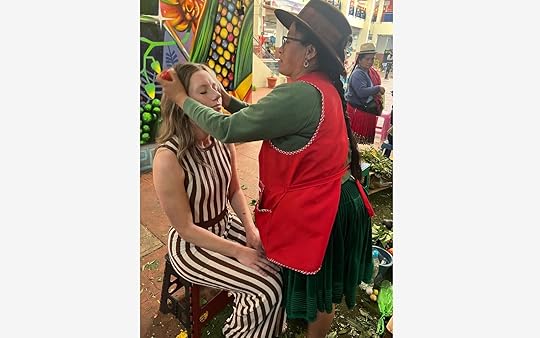
Photo: Jennifer Malloy
Originally called Guapondelig, which translates roughly to “Valley as Big as the Sky” in the Cañari language, Cuenca is more than just its cobblestone streets and colonial architecture. The UNESCO World Heritage site serves as a living bridge to the ancient past: a rich tapestry that blends Indigenous culture, Inca history, and Spanish infrastructure.
The Cañari culture traditionally values a matriarchal structure in which women hold significant roles within the community. In fact, the shaman before me is a woman—a role typically dominated by men in South American cultures—demonstrating that this system continues to thrive in Cuenca today. During the treatment, she supposedly drew the negative energy from my body, capturing it in the egg before breaking it open to release whatever darkness I’d been carrying. I was in an unassuming mall at the heart of the city, surrounded by women practicing their healing arts while the scent of corn drifted down from the food court above.
Though my healing experience was in the middle of the city, the chances to experience Cañari culture extend well beyond the city limits. Anxious to learn more about the living history myself, I left the city behind and drove into the mountains on a guided journey with 2 Degrees Expeditions. High in Cajas National Park, as the air thinned and the vast landscape unfolded in lagoons, waterfalls, and valleys, I hiked along an ancient Cañari path. Today, it’s a lesser known extension of the more well-known Inca Trail in Peru.
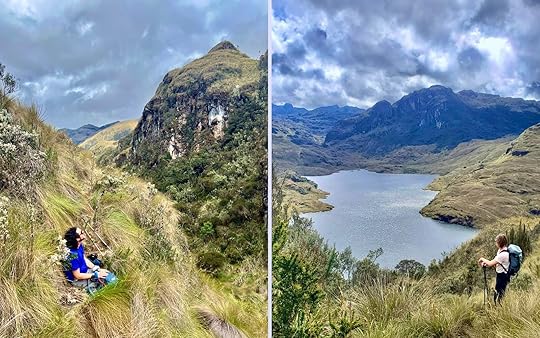
Photo: Jennifer Malloy
This stretch of the Inca Trail has no crowds, no wonders of the world, and no clear sign that the ground beneath your feet is sacred. There is only the paramo, a high-altitude Andean wetland ecosystem, dominated by spiky achupalla plants and stipa ichu grasses – and harboring a slumbering underworld waiting to awaken once more.
Long before the rise of the Inca civilization in the early 13th century, the Cañari people built the route I was walking, connecting Cuenca to the coast. The Incas later adopted the thoroughfare as both a trade route and an economic lifeline. Along it, chasquis, or fleet-footed Incan runners, would race to deliver fresh fish and tropical produce to the ruling class. Think of it as a centuries-old version of UberEats, powered entirely by human endurance.
View this post on Instagram
A post shared by What to do in Ecuador (@whattodoinecuador)
Unlike the Incas, however, the Cañari survived Spanish colonization, and the trail I was on was just one within a network of ancient Cañari pathways in and around Cuenca. Abandoned for years, these 5,000-year-old trails are now being revitalized by a group of intrepid locals, headed by Felipe Neira, the owner and operator of 2 Degrees Expeditions.
With a team of seven, including a biologist, historian, economist, and tourism expert, Neira researched the different ancestral trails in and around Cuenca, then walked and mapped each one, eventually creating 16 separate trails surrounding the city. It’s called the Caminantes project, and together, they’re known as the Caminantes trails.
As Cuenca grew and its city limits spread, development started to encroach on the edges of the encircling valley. “New houses, projects and roads were erasing the ancestral trails and archeological remains,” says Neira. “[They] were still there, but disappearing fast.” He partnered with the city in 2019 once the the project was underway, though the city’s participation ended during the COVID-19 pandemic.
Now, Neira personally funds the restoration and preservation of the trails through his tour company, offering travelers like me the chance to walk where the Inca once trod, near this sacred city.
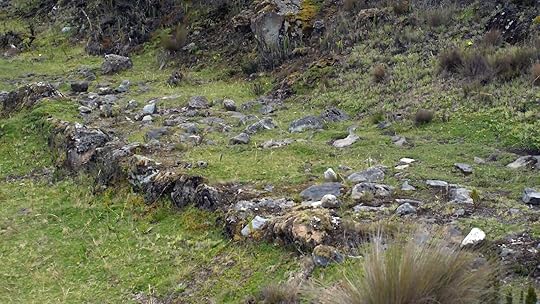
The remains of an Inca/Canari trail in El Cajas Natioanl Park, outside Cuenca, Ecuador. Photo: Angela N Perryman/Shutterstock
“The more I hiked the trails, the more I felt the importance of conserving [them] for future generations,” he says. “I would love my kids and their kids to also know the feeling of hiking the rim around the valley of Cuenca.”
Walking on one of these trails felt like equal parts historical trek and outdoor adventure, set in the clouds of the high Andes. Neira’s work may be breathing new life into these trails, but at over 10,000 feet above sea level, I’m struggling to find my breath.
It’s a dangerous state to be winded here, as the trail we’re navigating is dotted with “thin spaces:” caves thought by many to be supernatural portals to the underworld. My guide, Flavio Muñoz, was exceptionally knowledgeable about the native flora and fauna, but most of the information that entered my altitude-addled brain was lost as quickly as my breath. For some reason, it’s only the eerie supernatural legends that stuck in my mind.
View this post on Instagram
A post shared by M̷i̷t̷o̷s̷ ̷R̷e̷v̷e̷l̷a̷d̷o̷s̷ (@mitosrevelados)
According to Muñoz, the “Andean Yeti” is known to lure unsuspecting hikers through these portals during the summer and winter solstice. The giants are known as the “Guagua Grande.” “It means ‘big baby’ or ‘big boy,’” he grinned. A reference, he tells me, to the diaper-like loin cloth it wears.
This mythical giant is said to dwell in Ukhu Pacha, or the Andean underworld. According to tradition, portals to the underworld open during pagan celebrations, offering passage between worlds. But entering comes with risk: some who cross are said never to return.
“Those who do feel as though they’ve been dreaming,” says Neira. The only proof of their journey lies in the golden cobs of corn they return with, sometimes years after vanishing into the portal. The story is a nod to the ancient Cañari culture’s deep reliance on corn.
For me, my time in this province felt like an awakening, a moment of clarity, where history, culture, and landscape came sharply into focus, revealing how they intertwine to shape a people’s identity. It’s only the absence of a gold ear of corn that reminds me I haven’t crossed back from another world – I’ve simply experienced a little more of this one, thanks to Neira and guides like Muñoz who have worked to open this side of Ecuador to curious travelers. 
Most beautiful trees and forests
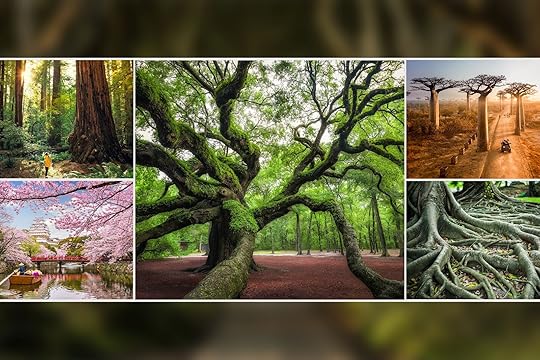
No one appreciated the beauty of trees, and immortalized them in literature, more than J.R.R. Tolkien. “I am at home among the trees,” said Legolas the elf in The Fellowship of the Ring, but it might as well have been Tolkien himself speaking. Under a black pine in the Oxford Botanic Gardens, the author sat and penned part of his famous trilogy, inspired by the unique trees and plants surrounding him. Tolkien viewed trees as living, breathing creatures with humanlike characteristics, and it’s easy to see why. From Japan’s bamboo forests to the ponderosa pines of Utah, the world’s trees are as diverse and beautiful as its people. Here are the most unique trees and forests around the world that will give you a Tolkien-esque love for trees.
Avenue of the Baobabs — Morondava, Madagascar
Photo: Michail_Vorobyev/Shutterstock
Madagascar is known for its otherworldly-looking giant baobabs, which you can easily find lining the road between Morondava and Belon’i Tsiribihina. The “Avenue of Baobabs,” as it is known, is considered the most accessible place to see baobabs in Africa, and the most beautiful road in Madagascar. Baobabs can reach heights of nearly 100 feet, and live to more than a thousand years.
Dragon’s Blood Trees — Socotra Island, Yemen
Photo: Naeblys/Shutterstock
Found on the Yemeni archipelago of Socotra in the Indian Ocean, dragon’s blood trees get their name from the red sap they produce. Given the island’s separation from the mainland about 20 million years ago, unique flora has been allowed to grow there undisturbed. According to National Geographic, 37 percent of the island’s 825 plant species are found nowhere else in the world.
The Dark Hedges — County Antrim, Northern Ireland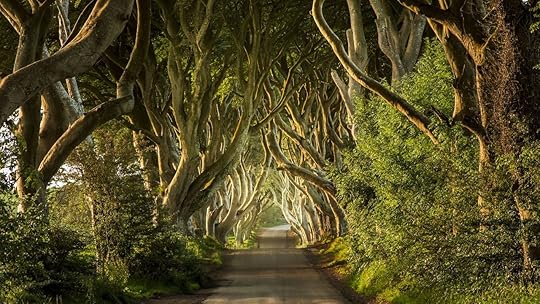
Photo: Michael Rocktaeschel/Shutterstock
This tunnel of beech trees in County Antrim, Northern Ireland, was planted back in the 18th century to impress those approaching the Georgian mansion, Gracehill House. Today, the Dark Hedges are well-known for being featured in HBO’s Game of Thrones, where they stand in as the Kingsroad, a road with Castle Black in the North at one end and King’s Landing in the South at the other.
Redwoods — California, US
Photo: Stephen Moehle/Shutterstock
The tallest trees in the world, California’s coast redwoods, grow on a narrow sliver of land on the California coast, from south of the Bay Area up to the border with Oregon. There are many parks in California where visitors can see redwoods for themselves, including Redwood National Park, Muir Woods National Monument, and Calaveras Big Trees State Park. California’s coast redwoods can reach a height of 367 feet and a base width of 22 feet.
Wisteria Tunnels — Kitakyushu and Tochigi, Japan
Photo: dk tazunoki/Shutterstock
Wisteria is a type of flowering vine that can be trained to take beautiful shapes. Every year, during the Wisteria Festival (Fuji Matsuri) in late April or early May, the 330-foot-long wisteria tunnels of Kawachi Fuji Gardens in Kitakyushu (on the island of Kyushu), and the enormous wisteria “tree” of Ashikaga Flower Park in Tochigi (on the island of Honshu), bloom to give us the most beautiful and colorful natural spectacle.
Dead Vlei Trees — Sossusvlei, Namib Desert, Namibia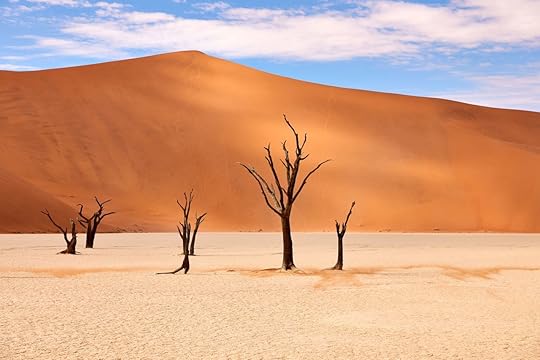
Photo: ArCaLu/Shutterstock
Sossusvlei in the Namib Desert is home to the Dead Vlei trees, which somehow manage to be both dismal and beautiful. The clay landscape was once in the floodplain of the Tsauchab River, but when the climate dried up some 900 years ago, sand dunes got in the way of the river flow and the trees all died. It’s too dry for trees to decompose, so they have been burnt black by the sun, and now form a forest of scorched trees, some over 1,000 years old.
Giant Sequoias — Sequoia National Park, California, US
Photo: zdenekkounovsky/Shutterstock
Sequoia and Kings Canyon National Parks in California are home to the largest trees in the world, by volume. “General Sherman” is the largest tree on Earth by trunk volume, and draws hundreds of thousands of visitors a year to the park’s Giant Forest that is home to 8,000 sequoias. Sequoias can reach the age of 3,400 years old.
Ta Prohm Temple Trees — Siem Reap, Cambodia
Photo: DeltaOFF/Shutterstock
Ta Prohm is one of the many beautiful temples in Siem Reap, Cambodia. Its popularity comes from the ceiba and fig trees that are slowly reclaiming the centuries-old stonework, their roots encroaching on the ruins, in a scene that shows the power of nature. You can wander through the temple’s corridors and explore the more natural maze created by the expanding roots.
Angel Oak — Johns Island, South Carolina, US
Photo: Mike Ver Sprill/Shutterstock
The famous angel oak is estimated to be between 400 and 500 years old. It’s growing just outside of Charleston, South Carolina, in the Angel Oak Park on Johns Island. Angel oak is considered one of the oldest living oak trees east of the Mississippi River. Four hundred thousand visitors come to the park each year to see this magnificent 65-foot-tall tree.
Crooked Forest — Gryfino, Poland
Photo: Traveller70/Shutterstock
On the outskirts of the town of Gryfino in northwestern Poland stands a small grove of roughly 400 Scots pines, each bending sharply near its base before arching back toward the sky. Planted in the early 1930s, the trees grew together in this peculiar formation, their trunks sweeping north in near-perfect unison. The cause remains a mystery. Some foresters believe the saplings were intentionally shaped to produce curved timber for shipbuilding or furniture, while others attribute it to damage from snow or shifting soil. Whatever the reason, the result is striking.
Rainbow Eucalyptus — Papua New Guinea, Indonesia, and the Philippines
Photo: gg-foto/Shutterstock
The rainbow eucalyptus is native to the rainforests of the Philippines, Indonesia, and Papua New Guinea. Their bright coloration appears on the tree’s bark which peels off to reveal striking shades of green, purple, orange, and pink that are reminiscent of “your average four-pack of assorted highlighters,” Australian Geographic explained. Some have been planted in the US, including Balboa Park in San Diego, California, as well as in specific spots Kauai, Maui, and Oahu, in Hawaii.
Ponderosa Pines — Bryce Canyon National Park, Utah, US
Photo: mariakray/Shutterstock
The Ponderosa pine is one of the American Southwest’s tallest trees, growing to heights up to 200 feet. The Ponderosa pine can be seen throughout western North America, but are most famous for appearing in Ponderosa Canyon in Utah’s Bryce Canyon National Park. The canyon is named for the unique trees, which can be found on the canyon floor. If you’re not sure you’ve run into a Ponderosa tree, try smelling its bark. According to the National Park Service, “Ponderosa Pine bark smells like vanilla or butterscotch.”
Great Basin Bristlecone Pines — Great Basin National Park, Nevada, US
Photo: Greg Mitchell Photography/Shutterstock
Found only in California, Utah, and Nevada, the Great Basin bristlecone pine is the oldest non-clonal species on the planet. Very resistant to harsh climate and growing conditions, it grows so incredibly slowly that it’s able to stave off insects, fungi, rot, and erosion, allowing for a very long lifespan — some live over 5,000 years. The best places to see some is in Great Basin National Park, where there are three groves.
The Major Oak — Sherwood Forest, England
Photo: CO Leong/Shutterstock
In the heart of Sherwood Forest, in central England’s county of Nottinghamshire, about two hours north of London, stands the legendary Major Oak — a colossal English oak believed to be 800 to 1,200 years old. Its gnarled trunk measures around 33 to 36 feet in circumference, and its canopy spans more than 90 feet. According to local lore, this was Robin Hood’s hideout, though its age likely postdates his era. The Major Oak’s vast branches are now supported by discreet metal poles to prevent collapse. Though the trunk is hollow at the center, the tree is still living and continues to draw visitors from around the world.
Białowieża Forest — Poland and Belarus
Photo: BBA Photography/Shutterstock
This vast woodland, straddling the border between Poland and Belarus, is one of Europe’s last surviving primeval forests. Once part of a great forest that covered much of the continent, it is now a UNESCO World Heritage site and home to more than 800 European bison — the largest remaining wild herd in the world. On the Polish side, Białowieża National Park protects old-growth sections filled with ancient oaks, spruces, and hornbeams, where some trees reach heights of over 150 feet.
Bamboo Forests — Kyoto, Japan
Photo: Guitar photographer/Shutterstock
Like wisteria, bamboo is another plant that technically isn’t a tree — it’s grass — but when you’re walking through a dense “forest” of them, you can hardly tell the difference. Sagano Bamboo Forest near Kyoto, Japan, is the most famous of them, but you can also find them in places like Maui in Hawaii.
Joshua Trees — Mojave Desert, California, US
Photo: Heavy T Photography/Shutterstock
The American Southwest’s famous Joshua trees are not true trees but a species of yucca (Yucca brevifolia), part of the agave family and native to the Mojave Desert. Joshua trees have spines and produce white-green flowers at the tip of their branches in the spring. Joshua trees are found mostly in the Mojave Desert, especially in Joshua Tree National Park in California, and have become one of the region’s most defining features. According to the NPS, you may also find them “growing next to a saguaro cactus in the Sonoran Desert in western Arizona or mixed with pines in the San Bernardino Mountains.”
Goblin Forest — Egmont National Park, New Zealand
Photo: Elena Yakusheva/Shutterstock
Egmont National Park, on the western coast of New Zealand’s North Island, surrounds the near-perfect cone of Mount Taranaki. Along its lower slopes lies the Goblin Forest, a dense stand of kāmahi trees whose trunks twist and fuse together under layers of moss, lichen, and fern. Many of these trees first took root on fallen logs, then grew downward and around them, creating the warped, interwoven shapes that define the forest today.
Blue Jacaranda — Buenos Aires, Argentina
Photo: Vanessa Bentley/Shutterstock
The blue jacaranda, a fast-growing ornamental tree native of South America, is known for stunning its bell-shaped violet flowers. The blue jacaranda was introduced in many other countries over time, including, Australia, Hawaii, Kenya, Tanzania, South Africa, and Zambia. While beautiful, the blue jacaranda is considered an invasive species outside a few places in South America.
Cherry Blossoms — Japan
Photo: Sean Pavone/Shutterstock
From the German city of Bonn, to the grounds of the Imperial Palace in Tokyo, to DC’s Tidal Basin, cherry blossoms mark the arrival of spring. The blooming of the cherry blossoms is nothing short of a phenomenon in Japan, with blossom-themed festivals held in many parks around the country. Similarly, in Washington, DC people come from all over for the National Cherry Blossom Festival each spring.
Spider Trees — Sindh, Pakistan
Photo: luciezr/Shutterstock
In 2010, when catastrophic monsoon flooding covered much of Sindh Province in southern Pakistan, millions of spiders escaped the rising waters by climbing into trees. Within weeks, the branches were shrouded in dense webs that gave the landscape a ghostly, silken appearance. Locals noted that mosquito numbers seemed to drop in areas where the trees remained cocooned, though the connection has never been scientifically proven. The spectacle lasted months before the webs collapsed under rain and wind, leaving behind a haunting reminder of how even small creatures adapt to environmental upheaval.
Buttress Roots — tropical rainforests
Photo: sittitap/Shutterstock
These roots, known as “buttress roots,” can be found on many different species of tree, although they are more commonly seen on trees in tropical rainforests. They are a form of widening and spreading of the trunk that act to help large, top-heavy trees stay upright.
Banyan Trees — India
Photo: Rubi Rodriguez Martinez/Shutterstock
Banyan trees are short and stout trees native to India. Their particularity, what makes them unique trees, is their aerial roots that develop from their branches and drop to the ground to grow new trees. This growing technique is the reason why Banyan trees have such wide trunks — it’s actually several trunks that grow closely together. One of the best-known banyan trees is the Arbol del Tule, a tree estimated to be between 1,433 and 1,600 years old in the Mexican state of Oaxaca, whose trunk has the widest-known circumference in the world at 119 feet (according to the Guinness World Records in 2005).
Axel Erlandson’s Circus Trees — California, US
Photo: SunCity/Shutterstock
The strangest trees you’ll ever see aren’t ones you’d find in the wild. They were created by the Swedish-American farmer Axel Erlandson, who engaged in the hobby of “tree shaping” and even opened an attraction called “The Tree Circus” in 1947. Twenty-five of his “Circus Trees” are still alive today at Gilroy Gardens Family Theme Park in Gilroy, California. If you can get past the fact that these tree formations aren’t natural, but instead the result of shaping and grafting techniques, visiting the park is a cool experience.
Japanese Maples — Japan
Photo: 2009fotofriends/Shutterstock
Japanese maples are native to Japan, Korea, China, Mongolia, and Russia, and have also been grown in temperate climates around the world since the 1800s. Unlike other plant species, the Japanese maple varies in leaf-form, color, and tree shape, making each one unique. There are more than 1,000 varieties of Japanese maple in the world today. 
October 13, 2025
Digital Nomad? Here’s the Travel Insurance You Actually Need

Remote working and the “everywhere office” have paved the way for a new way to travel. Digital nomads are free to work from anywhere, within reason, and may spend months or even years at a time bouncing from place to place, balancing adventure and cultural immersion with earning a living. Regardless of whether you’re freelancing, running a location-independent business, or tethered to a company as a remote worker, digital nomad-friendly insurance is an important, if not mandatory, step of the journey.
Digital nomads generally need a policy that blends typical travel mishaps with longer-term healthcare and equipment coverage. One option is to purchase a travel insurance plan alongside an international health insurance plan. The second, and usually most efficient option, is to shop around for a digital nomad travel insurance plan tailored for this lifestyle and your individual requirements.
Matador Network has partnered with World Nomads to bring you the best info and rates on travel insurance policies. We may receive a commission from links on this page
Key features of digital nomad travel insurance
Photo: PhotoSunnyDays /Shutterstock
Traditional travel insurance typically applies to common inconveniences like delays, cancellations, lost luggage, and medical emergencies, with the option to add a plethora of extras such as adventure travel coverage, travel disruption, collision damage, and pre-existing conditions. This type of insurance is trip-specific – purchased for a one-off vacation or multiple trips spread over a year. On the other hand, international health insurance offers long-term medical support abroad – these policies have historically served expats, or those living temporarily in one overseas location for a prolonged period of time.
Insurance plans for digital nomads are a hybrid of the two with customizations to suit your personal needs. World Nomads and Safety Wing are the prime examples of nomad insurers, with different pricing tiers and optional add-ons. When comparing policies, these are the most important elements.
Geographic coverage: As with regular travel insurance, digital nomad travel insurance is tied according to region, with coverage for the United States and Canada often carrying a premium. You can pay for worldwide/global coverage or tailor your policy to the region(s) you intend to visit. Not all providers will cover high-risk or sanctioned countries.Flexibility: Many nomads travel long-term with no fixed plans to return “home”. Digital nomad travel insurance is available on a rolling basis or as a prepaid agreement. Unlike standard plans that require purchase ahead of departure from your home country, digital nomad-friendly plans may be purchased and extended while overseas. Proof of return flight is not usually needed for digital nomad insurance. World Nomads allows a policy to be purchased online at any time, although they may impose a waiting period before the coverage is valid. That means – don’t wait for the worst to happen before purchasing a plan.Gear and electronics: Digital nomad plans provide coverage for those remote office essentials – laptop, phone, camera, and other personal effects. Note that this isn’t always the default and any claims for theft or damage will require documentation such as proof of purchase. World Nomads covers a maximum of $3,000 on their Epic Plan or $2,000 on an Annual Plan.Home visits: Unlike traditional travel insurance, digital nomad travel insurance usually permits “home visits” during your plan. Coverage is temporarily paused while you visit your family and friends, although most policies specify a number of days in relation to the policy duration. This tends to account for 15-30 days per 90-180 days. Travel-oriented insurance plans typically will not cover medical care during these visits.Duration: Some plans cover a specified period in a given location. This works fine if you are hopping from country to country. If you intend to spend longer than 90 days or 180 days in one country, either on a tourist or digital nomad visa, check that the policy will cover the entire stay.Emergency medical, evacuation, and repatriation: Fundamental to any travel or backpacker insurance, coverage for unforeseen medical emergencies or evacuation is a must. This coverage will either transfer you to a better-equipped hospital in the region or, if necessary, cover a return flight for medical care in your home country. When applying for a digital nomad visa, the country will set a minimum coverage for emergency medical care and repatriation.Add-ons and customizations for digital nomad insurance
Photo: Carlo Prearo /Shutterstock
While those items are the essentials of a digital nomad travel insurance plan, you may also need to pay a surcharge for the following components.
Adventure travel coverage: Popular adventure activities, such as mountain biking, surfing, snorkeling, and horseback riding, are usually included in digital nomad insurance plans. Winter sports, scuba diving, parachuting, and other high-risk or technical activities may be subject to a surcharge. Whether you’re a nomad or a vacationer, adventure sports like skiing and climbing are often subject to limitations relating to altitude.Motorcycling: Crucial for nomads heading to the hotspots of Chiang Mai and Bali, where many foreigners rent a scooter, you’ll need to incorporate this into your quote. In the event of a motorbiking accident, claims may be refused if you drive without the correct documentation or are found to have broken local regulations such as driving without a helmet or on the back of an unlicensed driver.Pre-existing medical conditions: Chronic, ongoing, and routine care is not automatically covered in travel and digital nomad insurance plans. You’ll need to provide honest information about your situation for an accurate quote.Dental care, mental health, and other specialist care: In the case that a provider will cover such treatments, a surcharge is applied to the base package. Safety Wing does offer such add-ons in their packages. However, specialist care is where an expat health insurance plan often comes up trumps.Is digital nomad travel insurance mandatory?
Photo: Ivan Marc /Shutterstock
The majority of countries proposing digital nomad and remote work visas stipulate that the candidate must carry an insurance policy. The specifications vary from country to country; in some cases, private health insurance is required, while others accept a travel insurance policy. A number require a travel insurance policy and private medical insurance. Proof of a plan may need to be presented during the application process or at immigration upon arrival.
Spain, Portugal, Italy, Estonia, Costa Rica, Colombia, Malaysia, the United Arab Emirates, Mauritius, Cape Verde, Namibia, and the Seychelles are examples where mandatory insurance is imposed. Any insurance policy should be valid for the entire duration of your stay and will need to meet a minimum coverage amount, as detailed on the country’s immigration website. World Nomads and Safety Wing are not always eligible in these cases – you may need to shop around for a health and medical plan tied to that specific country, from a local provider.
Best travel insurance plans for digital nomads
Photo: Shyntartanya /Shutterstock
The following providers rank highest for digital nomad insurance, blending gear coverage, healthcare, and adventurous pursuits for travelers.
World Nomads: Trusted by backpackers and adventure travelers from all walks, World Nomads is a comprehensive provider of digital nomad travel insurance. Policies, designated as Standard, Explorer, Epic, and Annual, may be customized to cover electronics, gear, and adventure sports. The main drawbacks are not covering pre-existing medical conditions. Recommended for long-term coverage.Safety Wing: Insurance specifically for digital nomads and remote workers with flexible plans billable on a rolling basis. Safety Wing’s policies suit fledgling nomads who are testing the water and want peace of mind without breaking the bank. Lots of customizations are available but pay close attention to the coverage terms for electronics, gear, and pre-existing conditions. Safety Wing isn’t always accepted by digital nomad visa schemes.Genki: Focused on health insurance for expats and longer-term digital nomads, Genki Native offers comprehensive plans inclusive of preventative care, dental care, pregnancy and postpartum care, and eye care. Genki Traveler is a lighter, flexible healthcare plan for digital nomads traveling for up to one year, while Genki Native carries a minimum contract of 12 months. Genki is an option for travelers applying for digital nomad or remote work visas in select countries.Insured Nomads: Backed by Allianz Partners, their comprehensive policies cover emergency, routine, preventive, and chronic medical care alongside mental health treatment, diagnostics, and travel insurance. Catering to established expats and longtime digital nomads, their plans carry more customization than competitors. These highly bespoke policies are most likely to be accepted for digital nomad visas and remote working programs.True Traveller: Much like World Nomads, True Traveller offers customizable packages pitched at adventure travelers, backpackers, and digital nomads who want flexibility and top-notch customer service. Transparent policies are divided into True Value, The Traveler, and Traveler Plus, with options to add extreme sports, electronics coverage. True Traveller policies are limited to United Kingdom and European passport holders. More like thisTravelLost Luggage? Here’s How Travel Insurance Can Save Your Trip
More like thisTravelLost Luggage? Here’s How Travel Insurance Can Save Your Trip
Matador Network's Blog
- Matador Network's profile
- 6 followers



